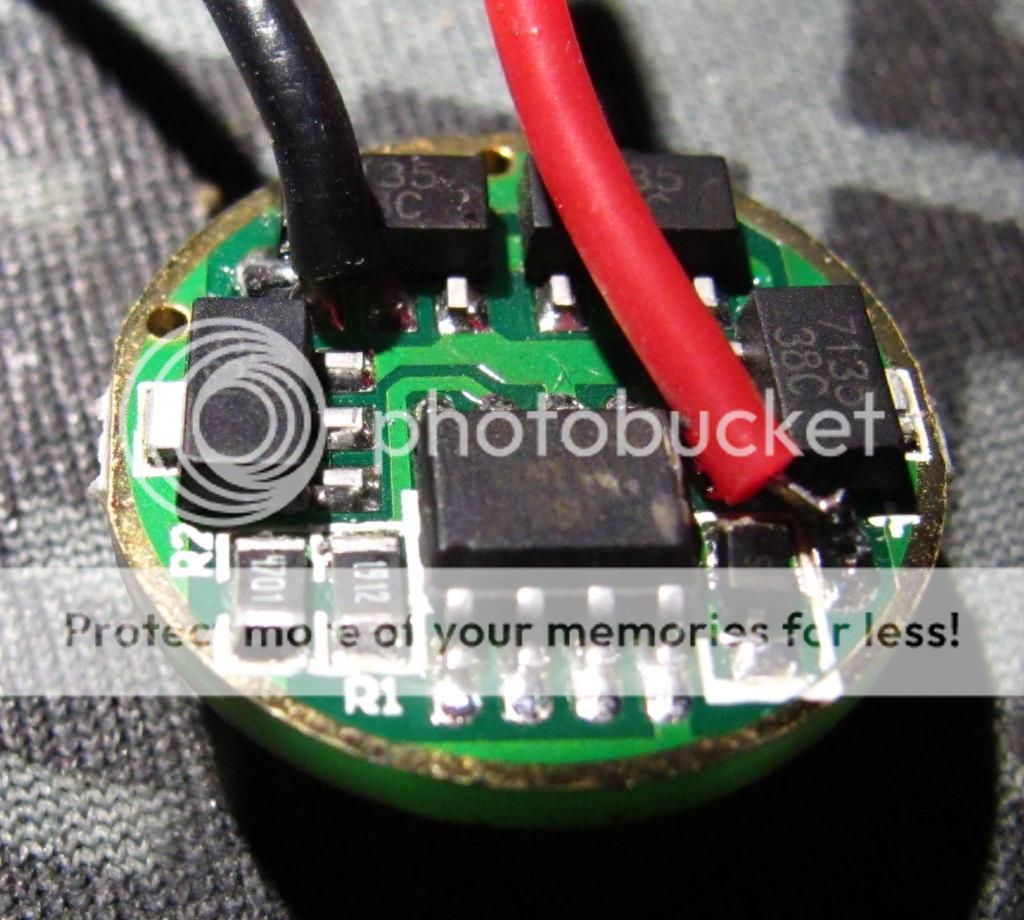
Seen here is a common 3A Qlite XML2 Driver.
Please make note of the 3 components across the bottom.
R2 and R1 on the Left, and D1 (unlabeled) on the Right under the red wire.
D1 is a diode that protects the MCU processor from reverse voltage.
R1 and 2 make up the voltage divider that delegate the low voltage cutoff.
As seen in this photo, R1 and R2 connect together electrically at the top, and then route to the MCU.
The bottom of R1 connects to ground or negative.
The bottom of R2 connects to the output of D1 which connects to +Vin from the batteries.
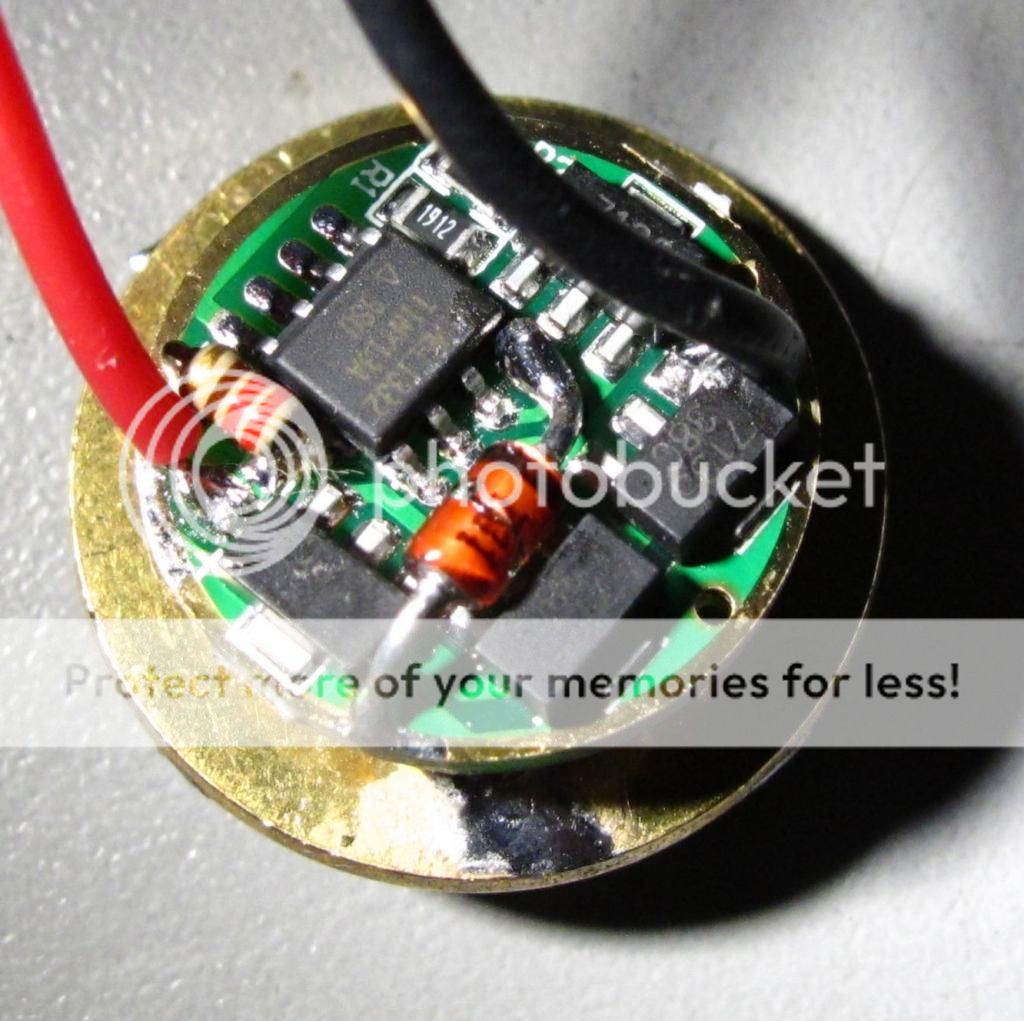
To do the Zener mod at it's most basic level, D1 is removed and replaced with a 200 to 220 ohm resistor.
This biases the MCU to run off the higher voltage of dual li-ion cells required power up the 6V MT-G2.
Then, a 4.3v Zener diode is connected from ground to the +V pin on the MCU as shown in the photo.
Alternatively, a smaller zener may be connected across capacitor C1 on the other side of the driver board as it follows the same electrical path.
The correct placement of the zener is with with stripe on the positive side, or AWAY from ground.
The 7135 regulators don't mind the higher voltage of dual li-ions but the MCU does. That new resistor connects +Vin directly to the MCU's + voltage input to power it up and is not connected to the 7135's. They are connected directly to -Vin and regulate - passing it to the LED. +Vin on the driver simply powers the MCU and passes directly to the LED.
The 200-220ohm resistor is selected based on the typical operating voltage of the batteries under load.
When the driver is put into low mode, this can cause a spike in the voltage as there is not enough load to cause a voltage sag.
This is when the zener comes in. A zener diode will "switch on" when the voltage reaches it's rating, at which point any extra voltage which may damage the MCU is bled off to ground.
4.3v is selected as it compensates for the 5% tolerance of the component allowing the MCU to operate at a 4v min to 4.5v max voltage range regardless of which way the 5% drifts.
The zener mod as seen so far at it's basic level, disables reverse polarity protection as the diode has now been removed, and low battery shut down as the MCU is now getting higher then normal battery voltage reading.
This brings us to the next phase to enhance the zener mod.
Next we will rebias the voltage divider to set a new low voltage cut off point.
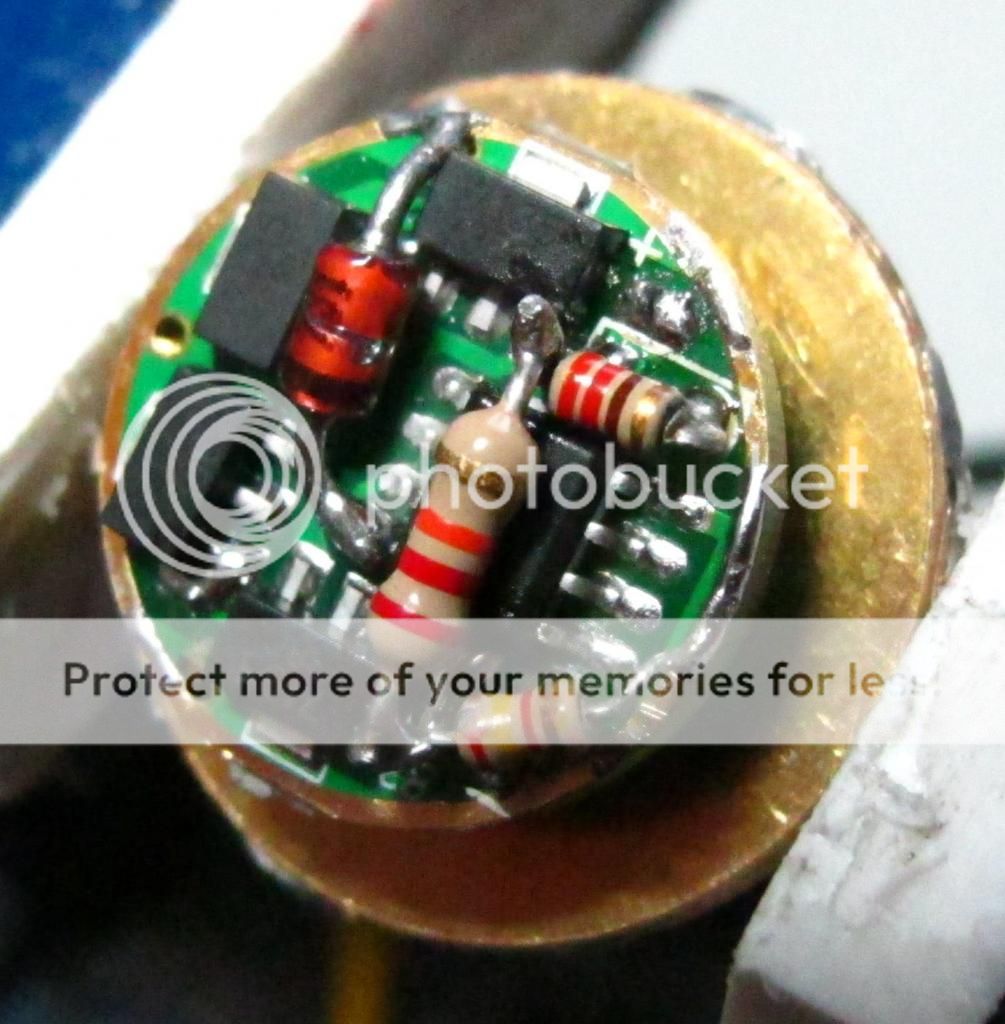
Seen here, R1 has been replaced with a 2.4k resistor, and R2 has been replaced with a 22k resistor.
Half of R2 has also been moved. It has been connected to the top of the new 220ohm MCU resistor which is connected directly to +Vin so that it can correctly read the battery voltage and is unaffected by the MCU resistor.
As referenced in the very first photo. R1 and R2 are connected together on the top, routing then to the MCU.
The Bottom of R1 connects to ground or negative in.
The bottom of R2 has been moved.
The MCU reads the battery voltage not from it's + input but from and extra sensing pin that get's it's reading from the voltage divider resistors.
R1 is the dividers shunt to ground, and R2 connects to +Vin to get the battery voltage.
Between the 2 of them a voltage output results that gives the MCU essentially and On/Off signal telling it when the batteries are low.
When the batteries are High the MCU reads over 1v from the resistors. When the voltage drops below 1v to around 0.6 to 0.7v the MCU triggers emergency low mode. When the voltage drops to 0.5v or below the MCU triggers a warning signal and shuts down.
R1 and R2 value ratios are selected to translate the desired low battery voltage into the above mentioned MCU trigger voltages.
Due to component tolerances, results may vary, however, in my case:
This ratio resulted in emergency low mode kicking in at around 5.5 to 5.6v, and shutting down at just over 5.1v, on the bench while using a powersupply.
In practice, testing with actual batteries, low mode kicked in a 5.42v.
This is just about perfect for running IMR cells that are typically rated for a minimum discharge of 2.5v/cell, and accommodates nicely Lifepo4 cells which the Zener'd MT-G2 also runs well off of.
At 2.71v/cell you will get a clear warning that the batteries are exhausted when the light drops into low mode automatically.
The components I selected were based on common availability.
Raising R2 or lowering R1 will raise the cut off voltage.
I could not find another common value for R2 that would accommodate my needs.
The stock value is 19K. There are few if any common values between that and 22k.
Jumping up to 33k raised the cut off voltage too high for me.
I chose to go with 22k and played around with R1.
A common value of 2.2k on R1 changed the shutdown trigger to about 6.4v which was too high.
As you can see, it's a very touchy and delicate balance. It took me a couple hours of experimentation to get the results I wanted.
And now, Pics or it didn't happen:
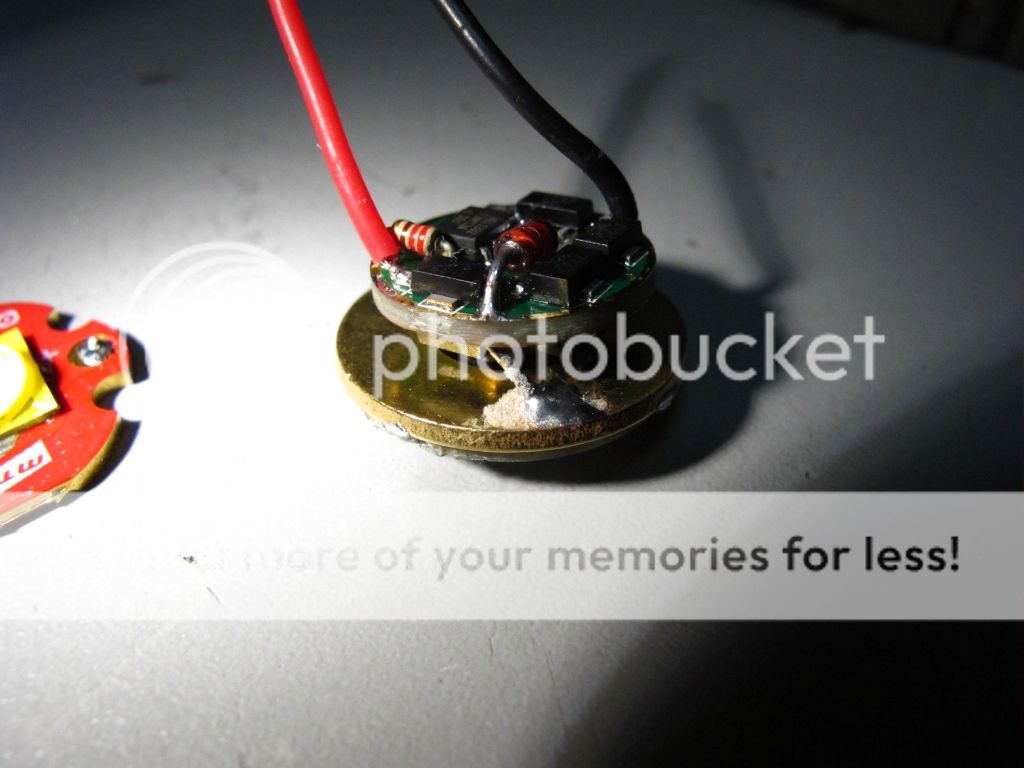
A combination 21mm contact board and brass washer are used to fit the driver module into the dropin I had to work with.
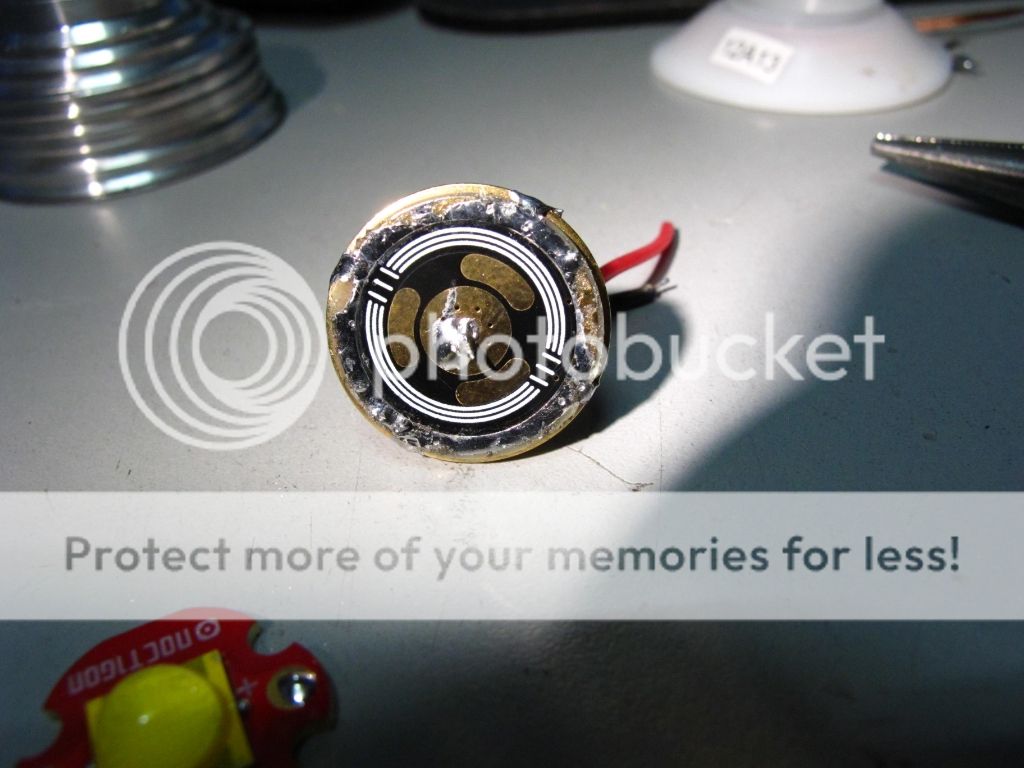
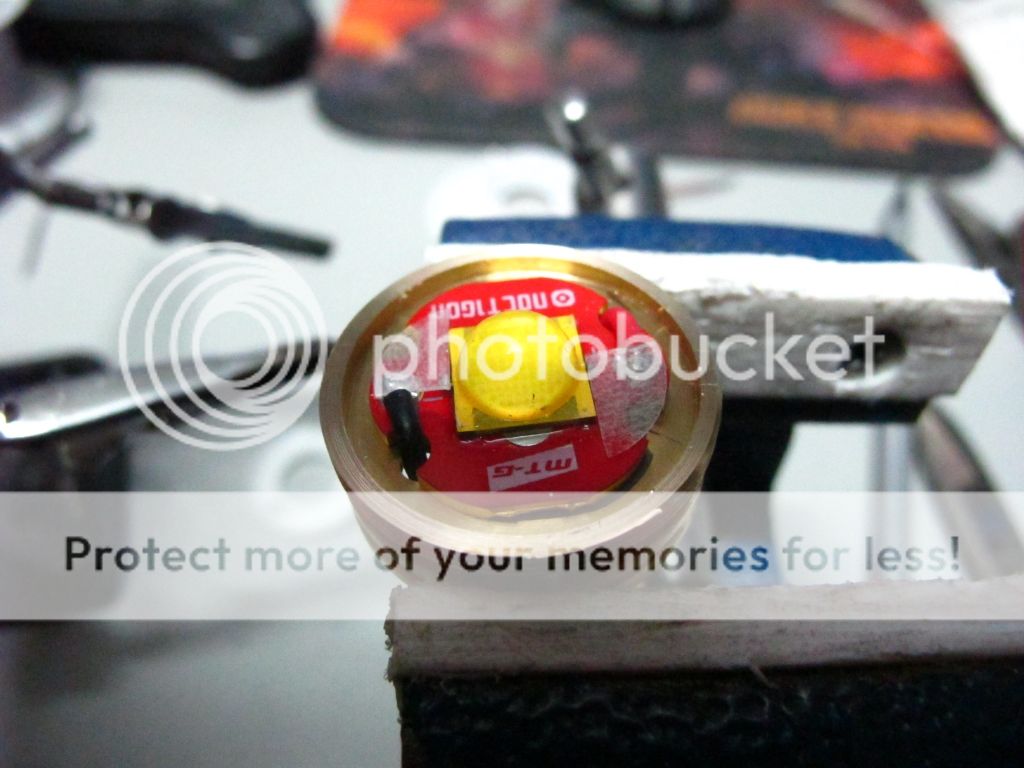
The beast. Note the cutting around the edge.

I like my FET switch mods.

It's not pretty, but it works. I used a 52mm P7 drop in from DX.
It needed fitting. I had to lathe the edge so it would sit proper deep in the mag head.

This side is pretty. I had to turn down the slug on the lathe a bit so that it would tightly sandwich the LED in place.

18g wire salvaged from a Computer PSU. I wanted to use spring contacts originally but they did not reach the top of the Mag Tower.

The power plant.
Despite the lack of cooling that this dropin offers. It will run without much heat on medium for long periods of time while cranking out as much light as an XML at 3 amps. I measure 750ma draw from the tail on medium.
On high it runs reliably without any overheating issues for a solid 20mins straight.
I used thermal past on the threads that mate the slug to the reflector. It seems to do a decent job cooling the MT-G2 at it's stock 3amp draw. Overall I'm very happy and impressed with this build.
Last edited:


